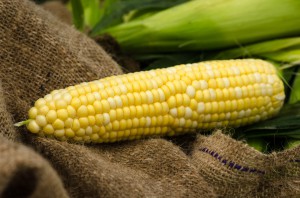There is a lot of information in the media these days that paints a negative picture of GMO crops. But before you jump on board with the anti-GMO groups, it is important to get the whole story. Here are some of the benefits we get from GMO crops.
1. Reduced Use of Herbicides and Pesticides
One way the genetic medication in crops can benefit the surrounding environment is by reducing the amount of herbicide and pesticide that must be used to keep crops healthy and pest free. Genetically altering crops to be more resistant to diseases and pests means farmers have to use fewer chemicals to ensure a good crop yield. This is especially important in developing countries where farmers may not have access to or knowledge about safer herbicide and pesticides. The use of GMO crops in these areas means a food supply with less pesticide residue.
2. Decrease Non-Target Collateral Damage
When the need for pesticides and herbicides is decreased there is less collateral damage to non-target insects and plants. This means that non-pest insects and other plants are less likely to be impacted. One example of this is maize that contains Bt toxin. This toxin acts as a natural pesticide reducing the amount of broad-spectrum pesticides that must be used to protect the corn crop.
3. Better Virus Resistance in Small Grains
The ability to make smaller grains more resistant to viruses also means farmers need less insecticide to control the spread of viruses from plant to plant by insects.
4. Terminator Traits Help Control Unintended Introduction
One concern that often comes up with GMO crops is that there will be unintended consequences and genetically modified traits will spread to non-target species. By engineering these crops to be self-sterilizing or with terminator traits, the spread of these genetically altered traits to non-target species can be controlled. These traits also help prevent GMO species from moving into the wild environment or into unanticipated eco-systems.
5. Enhanced Nutritional Profiles
One significant benefit of GMO crops is that they can be engineered in ways that enhance their nutritional content. Some examples of this include soybeans with better fatty acid profiles, golden rice with increased beta-carotene, and other biofortified crops with enhanced levels of iron and zinc. These enhancements make it possible to produce cooking oils with healthier fat profiles and offer new opportunities to increase nutrition availability in developing countries.
6. Safe for Consumption
Numerous studies have shown that GMO crops are not linked to any negative health consequences including the incidence of cancer, infertility, allergies, ADHD, or any other health conditions. Our bodies digest food made from GMO crops the same way they digest non-GMO food.
7. GMO Crops Keep Food Costs Low
Even if the seeds for a GMO crop are more expensive than non-GMO seeds, the use of these seeds allows farmers to grow more food at a lower cost. This cost savings results when farmers can get a higher yield with fewer resources including pesticides and herbicides. If farmers do not have to spend as much money on pesticides and herbicides and get a higher yield, their costs decrease which helps keep the cost of food affordable.
Related articles
- Play Your Part in Writing the Story of American Agriculture (fillyourplate.org)
- What Can Kids Learn from Gardening (fillyourplate.org)
- 6 Great Ways to Connect With Your Kids Outdoors This Summer (fillyourplate.org)



